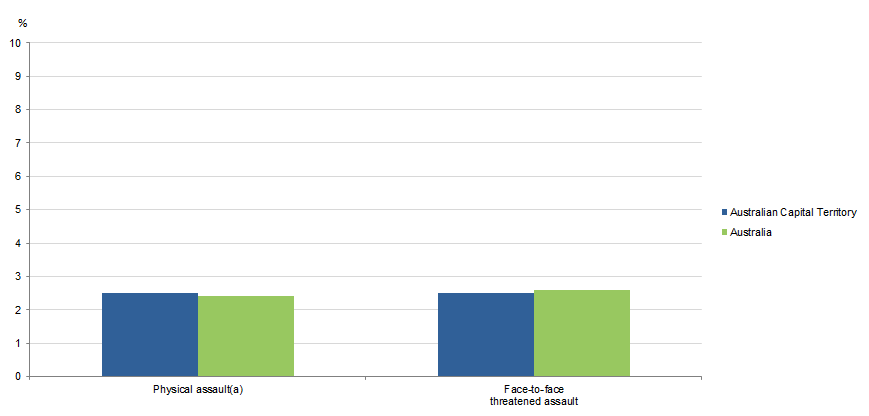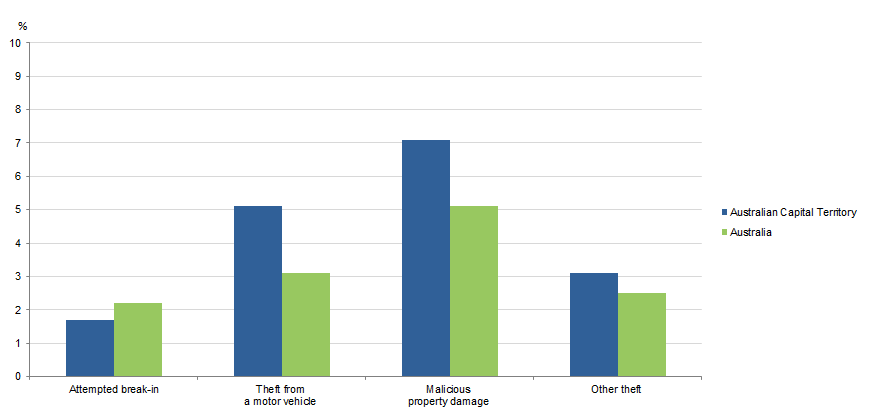VICTIMISATION EXPERIENCES IN THE AUSTRALIAN CAPITAL TERRITORY
PERSONAL CRIME (Tables 4, 5 and 10)
VICTIMISATION RATES, Selected personal crimes, Australian Capital Territory & Australia, 2017–18

Footnote(s): (a) ACT estimate has a relative standard error of 25% to 50% and should be used with caution.
Australian Bureau of Statistics
© Commonwealth of Australia 2019.
Physical assault
During 2017–18, an estimated 2.5% of persons in the Australian Capital Territory (7,900) experienced physical assault. Endnote1
Threatened assault
An estimated 2.2% of persons in the Australian Capital Territory (7,100) experienced face-to-face threatened assault during the 2017–18 reference period.
HOUSEHOLD CRIME (Tables 6 and 7)
VICTIMISATION RATES, Selected household crimes, Australian Capital Territory & Australia, 2017–18

Australian Bureau of Statistics
© Commonwealth of Australia 2019.
Attempted break-in
During the 2017–18 reference period an estimated 1.7% of households in the Australian Capital Territory (2,700) experienced an attempted break-in.
Theft from motor vehicle
An estimated 5.1% of households in the Australian Capital Territory (7,900) experienced theft from a motor vehicle, which was higher than the national rate (3.1%). Of these households, 46% (3,600) had the most recent incident reported to police.
Malicious property damage
During the same period, an estimated 7.1% of households in the Australian Capital Territory (11,000) experienced malicious property damage, which was higher than the national rate (5.1%). Of these households, 56% (5,300) had the most recent incident reported to police.
ENDNOTES
Endnote 1 Estimate has a relative standard error of 25% to 50% and should be used with caution
 Print Page
Print Page
 Print All
Print All
 Quality Declaration
Quality Declaration